
I have seen cases online where Arduino is used to create a simple electromagnetic radiation tester, typically using several LEDs to display the intensity of electromagnetic radiation. The micro:bit comes with a built-in LED matrix, so I thought it would be more intuitive to migrate this small experiment and use the matrix to display radiation intensity directly.
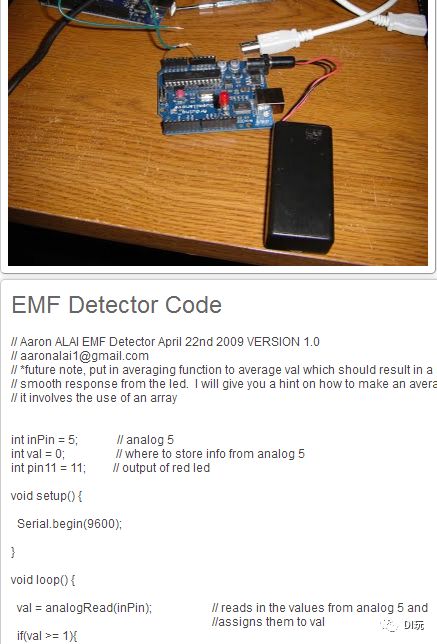
Materials
BBC micro:bit ×1
Robot:bit expansion board ×1
4.7k resistor ×1
Dupont wires ×2
Breadboard ×1
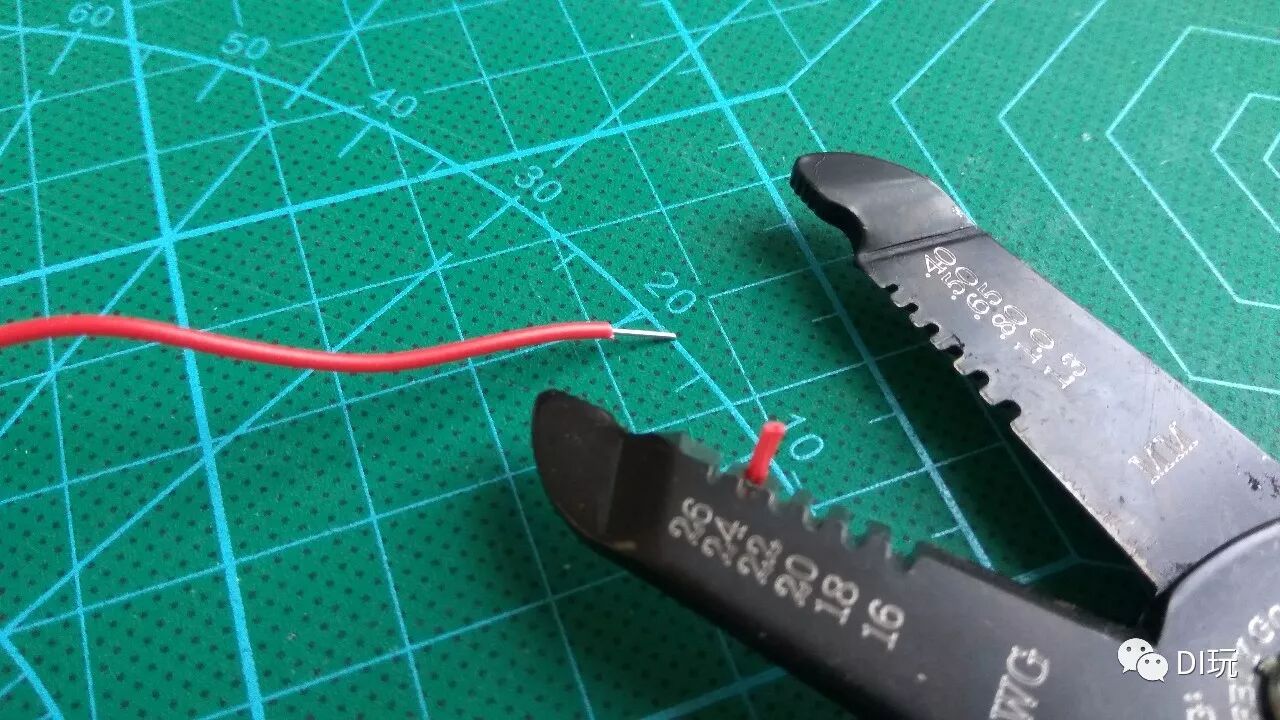
Cut a piece of wire to serve as an “antenna”
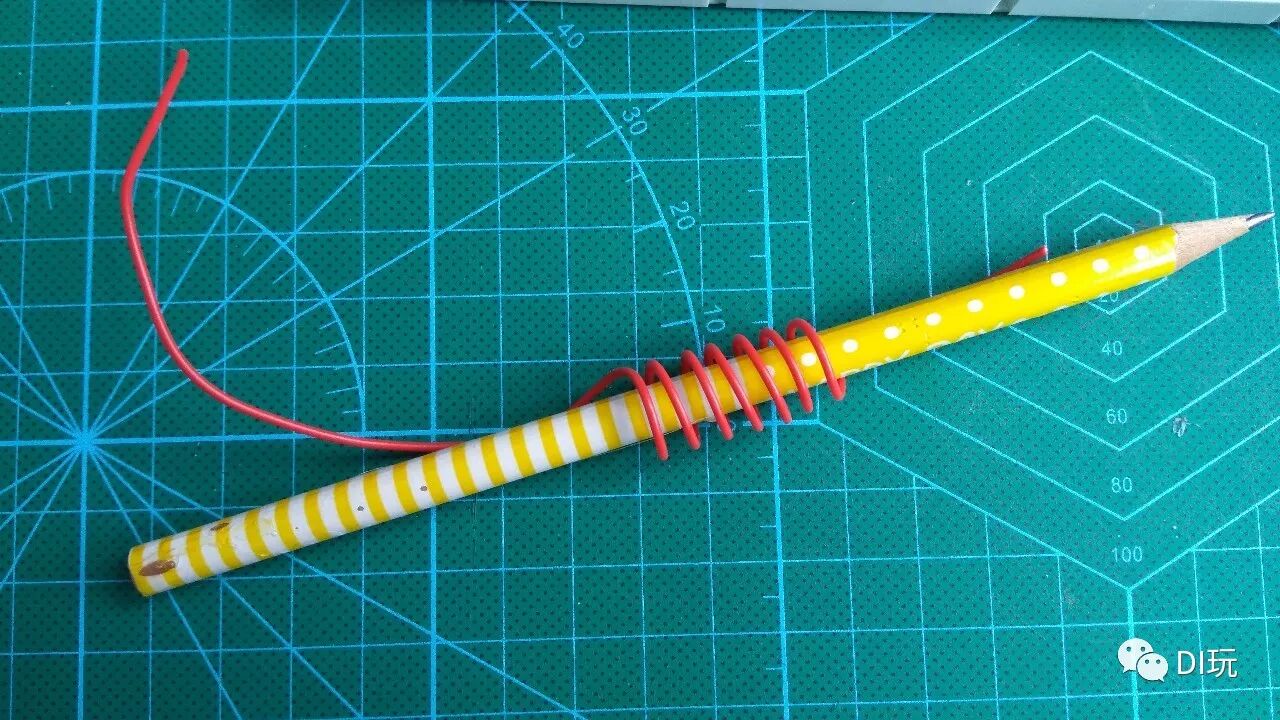
Wrap it around a pencil
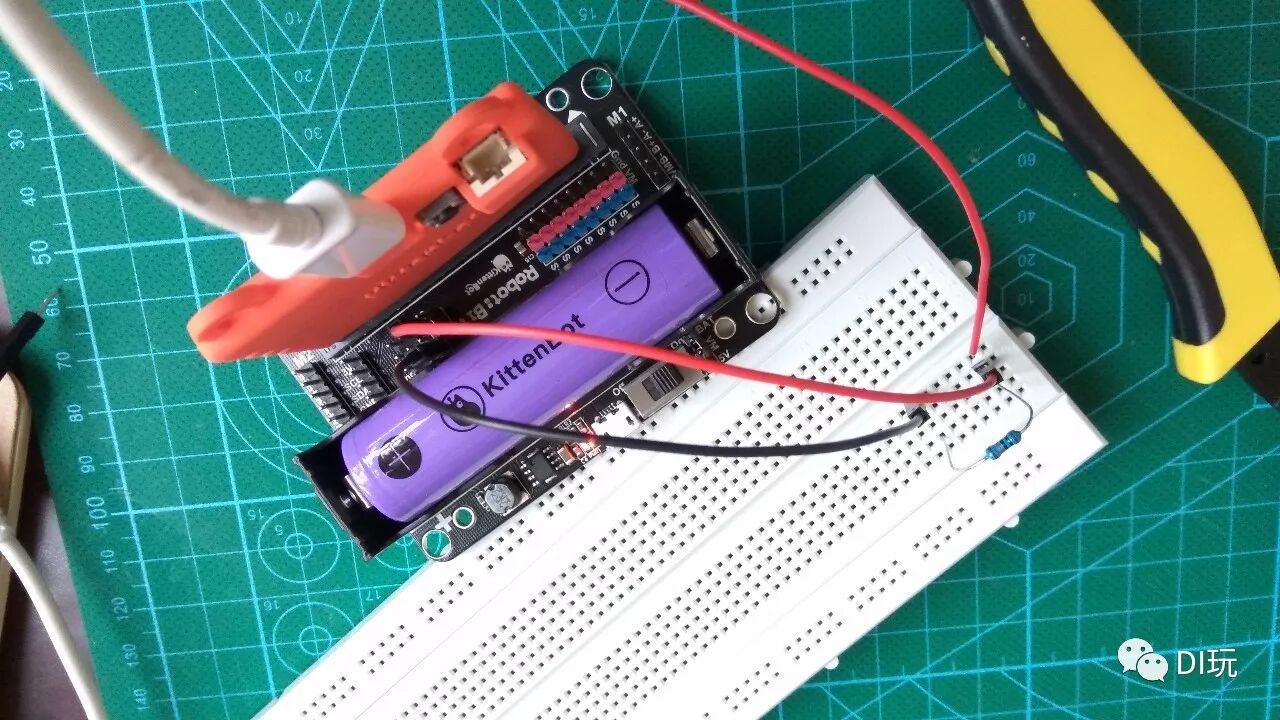
The wiring method is as shown above, with a resistor connected in series between A0 and GND
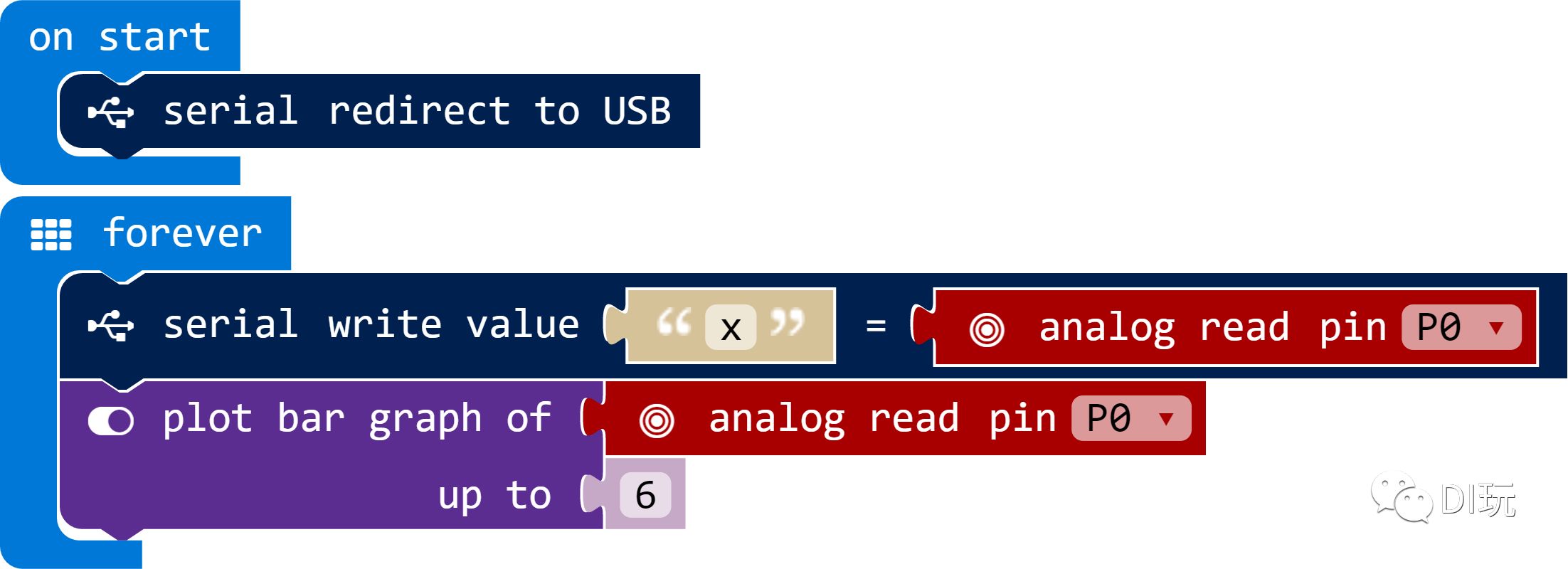
The command “plot bar graph of” is somewhat similar to the map function, allowing the variable to be mapped to the change in the illuminated area of the matrix, forming a bar graph, with “up to” corresponding to the maximum value that can be detected. After uploading the above program to the micro:bit, you can use the offline version of MakeCode with a serial monitor to observe the changes in electromagnetic radiation intensity detected. (For information on using the offline editor, refer to the KittenBot-Makecode offline version serial monitor tutorial)
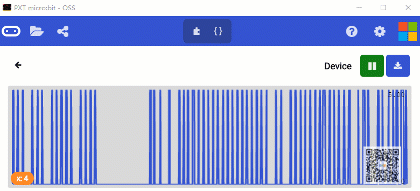
The “radiation source” used for testing is a ZuoMei electric grinder, and the changes are quite noticeable at the moment it starts.
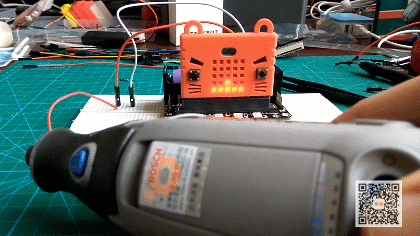
With the micro:bit encased in a silicone cover from Meow House, each LED on the matrix lights up as a square dot, giving a feel similar to an audio spectrum display, which is quite impressive.
Here is a test video
In terms of effectiveness, although the distinction between different intensities of electromagnetic radiation is not as clear as with Arduino, it still has a certain detection capability.
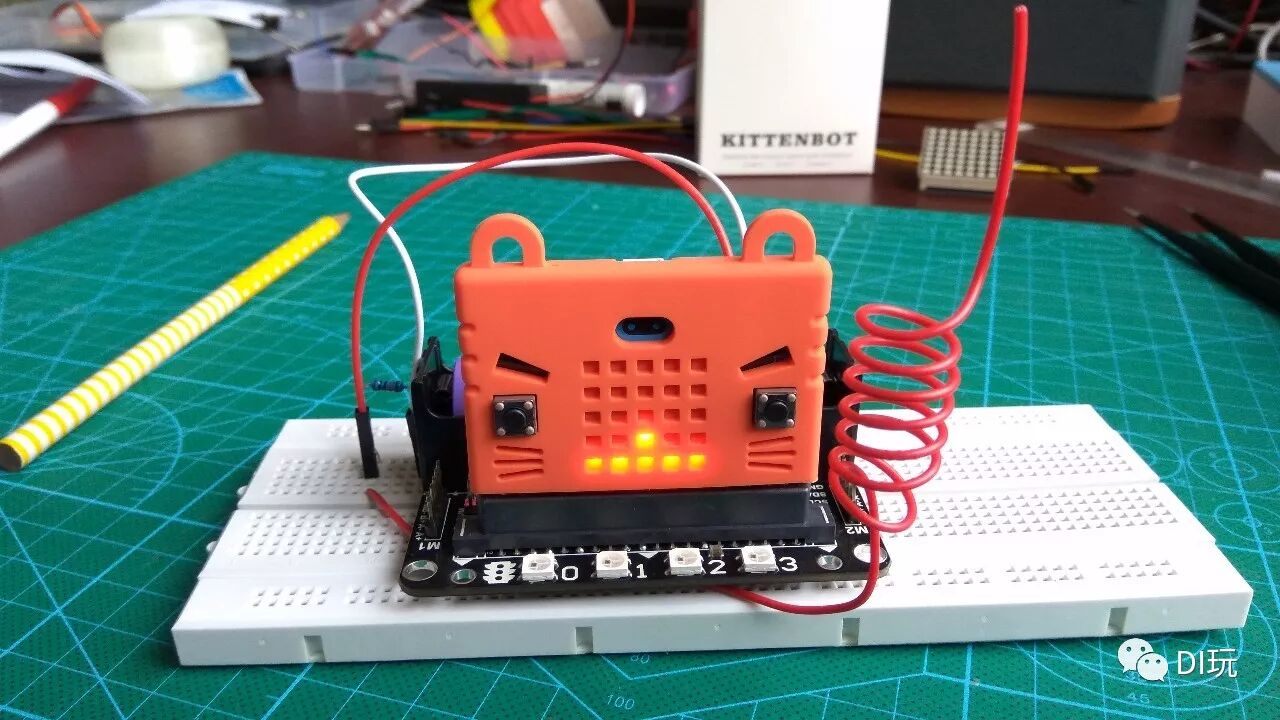
Little Meow Spy
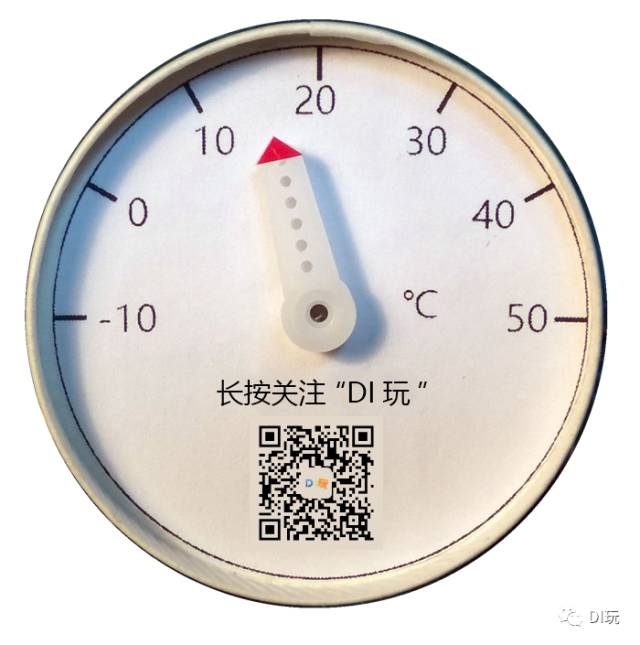
Previous Fun Courses
[Micro Course] Xiaomi Fun micro:bit 01 HELLO, DIMI!
[Micro Course] Xiaomi Fun micro:bit 02 “Heart-Pounding”
[Micro Course] Xiaomi Fun BBC micro:bit 03 Bomberman (Part 1)
[Micro Course] Xiaomi Fun BBC micro:bit 04 Bomberman (Part 2)
[Micro Course] Xiaomi Fun BBC micro:bit 05 Play a Tune of “Twinkle Twinkle Little Star”
[Micro Course] Xiaomi Fun BBC micro:bit 06 Digital Dice
[Micro Course] Xiaomi Fun BBC micro:bit 07 Plant Monitoring Device
[Micro Course] Xiaomi Fun BBC micro:bit 08 Halloween Trickster
[Micro Course] Xiaomi Fun BBC micro:bit 09 Steve’s Magnetic Ore Detector
[Micro Course] Xiaomi Fun BBC micro:bit 10 Bear Grylls’ New Compass
[Micro Course] Xiaomi Fun BBC micro:bit 11 Autumn Pants Summoning Artifact
[Micro Course] Xiaomi Fun BBC micro:bit 12 A Cup of Temperature (Part 1)
[Micro Course] Xiaomi Fun BBC micro:bit 13 A Cup of Temperature (Part 2)
[Micro Course] Xiaomi Fun BBC micro:bit 14 Boolean’s Heart-Shaped Night Light
[Micro Course] Xiaomi Fun BBC micro:bit 15 Hogwarts Magic School’s New Apprentice
[Micro Course] Xiaomi Fun BBC micro:bit 16 Turkey Hunter
Mi Dad’s Digital Laboratory
-
Fun with DF Boson Micro:bit Heart Rate Sensor
-
Mi Dad’s Digital Laboratory: Fun with micro:bit Racing
-
When Little Makers Dive into the Herbal Garden – An Integrated Practice Course Attempt Based on micro:bit
-
micro:bit Transforms into Bug Agent
-
KITTENBOT MP3 Module Initial Testing
-
Remote Monitoring, Real-Time Recording, Animation Alerts, Transforming WU-LINK into an IoT Plant Nurse for Just 1 Yuan
Knowledge and Reflection
-
Completing Professional Growth While Being a Dad
-
It Should Have Warmth – A Few Words on the Decoration and Arrangement of Maker Spaces
-
Small but Strong, BBC micro:bit is About to Make a Comeback in Maker Education
-
Discussing Craftsmanship Spirit from an 80 Yuan Tire Repair
-
Initial Experience of Classroom Teaching with BBC micro:bit and Suggestions for Teaching Environment Setup
-
Using Maker Methods to Interpret the “Guidelines for Comprehensive Practice Activities in Primary and Secondary Schools”
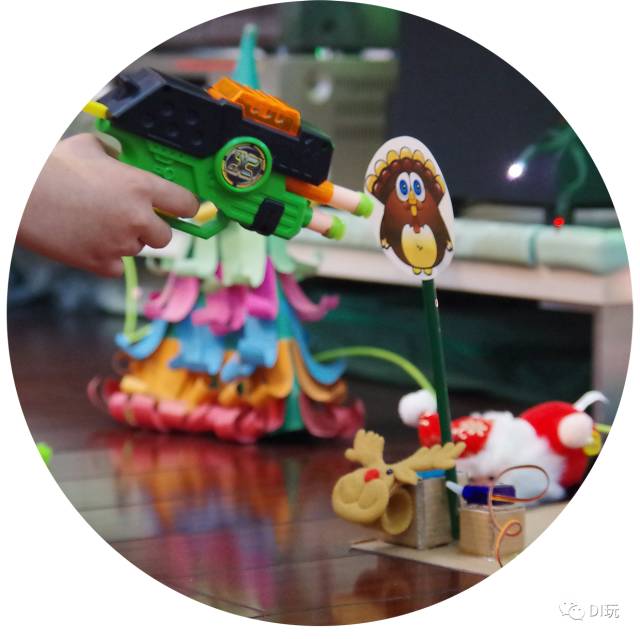
Click to read “Turkey Hunter”